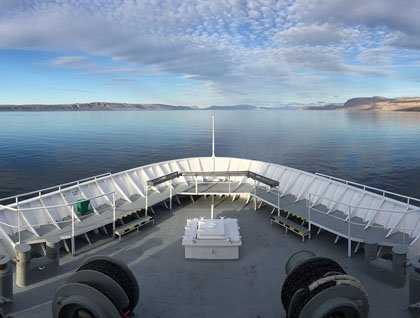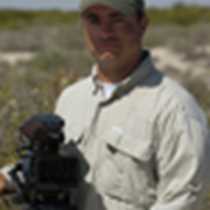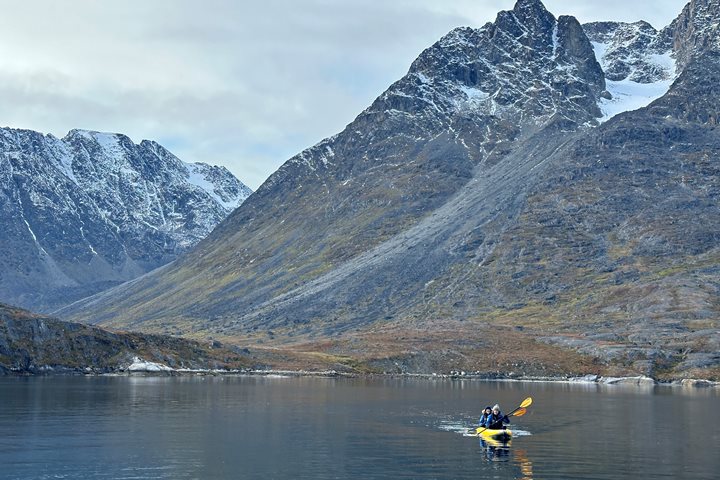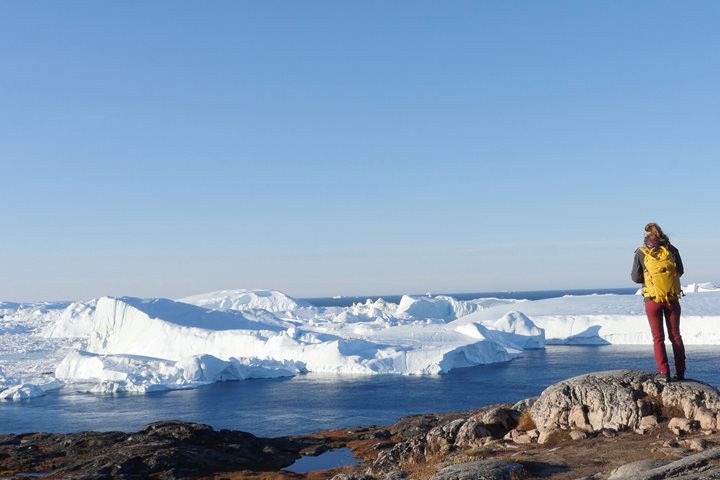Boldly going where no expedition ship has gone before the National Geographic Explorer plotted a new course last night. As the east coast of Ellesmere is still hopelessly clogged with thick sheets of “old” pack ice and beset by 30-knot winds that would have prevented us from exploring Ellesmere as planned, we headed off into uncharted territory as for the first time in decades the west coast of the island is ice free due to a 10-mile thick plug of ice lodged between the north end of Axel Heiberg and Ellesmere Islands. So instead of heading east out of Jones Sound on the north coast of Devon Island, we turned northwest and headed into Fram Sound bound for the ominously named Hell Gate Strait and Norwegian Bay on the west side of Ellesmere Island. Gentle northwest winds had cleared a path for our transit through Hell Gate in the early hours from which we emerged into Norwegian Bay, that save a few white and turquoise “bergy bits,” was calm and clear. At breakfast we crossed Latitude 77 and spotted our 50th polar bear of the trip, which was perched on the one large ice flow of the day—she too was enjoying breakfast!
In recent memory according to our ice captain, Germain Tremblay, no ship has traversed Norwegian Bay without an icebreaker, yet today astonishingly there was hardly any ice to be seen! Throughout the morning we took up positions around the ship and watched as the marine cloud lifted and revealed the breathtaking scenery of this unexplored region unfolded around us: to port—the low, tundra covered slopes of Graham Island and on our starboard—the Bjorne Peninsula of Ellesmere Island. Off on the northern horizon the glaciers of Axel Heiberg Island appeared to spill down into surrounding fjords like waterfalls. Part of the Sverdrup Islands that belonged to Norway until 1930, Axel Heiberg Island is Canada’s seventh largest island.
During the morning while a few naturalists stayed on the bridge searching for wildlife, Jason Kelly gave a talk on icebergs and in the afternoon after a scrumptious tea, Eva Aariak spoke to us about the development of Inuktut as a written syllabic language over that past 150 years.
In the early afternoon we sailed into Eureka Strait, and after passing latitude 78, we spotted a herd of caribou in the distance on the western slopes Ellesmere. The vistas of far-off glaciers and the rugged multi-colored cliffs of folded and uplifted rocks flanked the fjord, which at times gave way to rolling hills of tundra. The colors of the landscape flickered from hues of brown, to ochre, burnt umber, burgundy and olive green as the angle of sun changed with each passing moment. In the late afternoon we moved in closer to the coast of Ellesmere to look at a hill dotted with herds of white arctic hares and in the far distance we spotted our 51st polar bear strolling along the shore.
Tonight is the last night of the summer that the sun does not set in this part of the polar region and there will also be a perigee (super) moon. But that is not really why we will all be up at midnight—because as we arrive off the tiny weather station and Canadian Army base of Eureka, on the west side of Ellesmere, we will actually cross Latitude 80!









